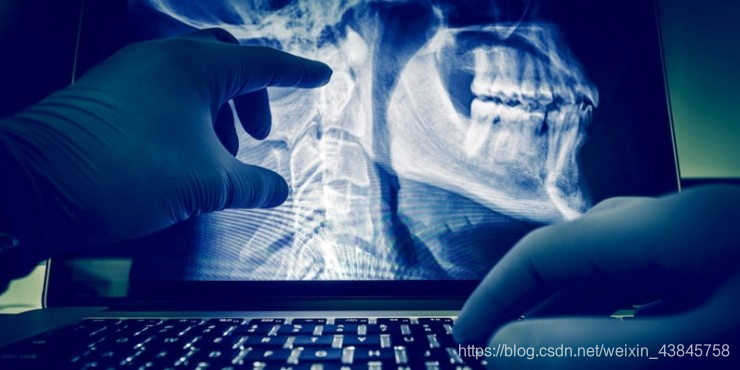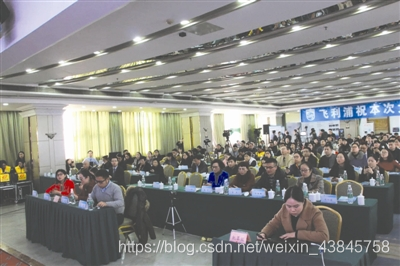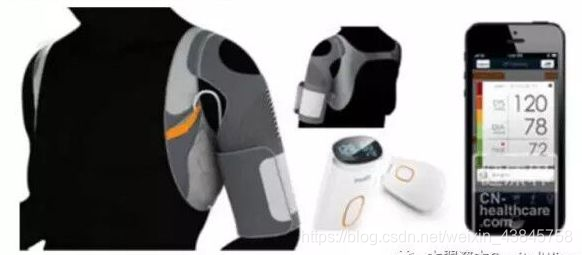电子科技大学 格拉斯哥学院 2017级 段沐雨
In the information society, machines have gradually penetrated into every corner of our lives, completely changing our way of life, work and entertainment. From the smallest voice assistant, such as Siri, to the behavior algorithm, search algorithm, and then to automated vehicle and aircraft driving. Although the above achievements are enough to surprise us, this kind of artificial intelligence technology is still in its infancy. Popularly speaking, a real AI system is a system that can learn by itself. And how will this technology affect our future life?
At present, narrow AI is being used in various medical data, which enables us to evaluate aspects that were previously invisible and seemingly impossible to measure in our lives. Dr. Manneri said to me during his treatment: "Human beings do not know much about many diseases. According to my medical experience, when we don’t know what to do, we often use three kinds of drugs. The first is steroids, which can inhibit all kinds of inflammatory symptoms in the body; the second is antibiotics that can treat infections from ears to toes; and the last is anticoagulants such as aspirin. He shook his head helplessly as he told me this. Even in this world’s most advanced hospital, we still use these non-targeted primitive drugs to drive diseases out of our bodies.

Machines don’t need to do that - they’re far more accurate than humans, and if we want to continue to make progress in medicine and medicine, we need precision.
The greatest advances in medicine in the 20th century were the emergence of organ transplantation and minimally invasive surgery. The 21st century will be the maturity of precision medicine and the penetration of artificial intelligence into all fields of Medicine on the basis of breakthroughs in molecular biology. In the past five years, the application of artificial intelligence + in medical research has become a hot spot of modern science and technology. Five top hospitals in the United States, such as Mayo and Cleveland, have begun to cooperate with AI companies in the hope of becoming the center of AI medical applications to detect, diagnose, treat and manage diseases. The whole medical industry is highly complex and involves a wide range of knowledge. Artificial intelligence can play a role in many aspects, such as medical image recognition, biotechnology, assistant diagnosis, drug research and development, nutrition and other fields.
Computerized doctors have three advantages over human doctors:
Firstly, computer doctors are proficient in medicine: from a large number of medical reference books, medical journals, clinical diagnostic manuals, medical electronic records, to encyclopedias, dictionaries, books, news and even movie scripts, computers can store almost all available medical knowledge. In contrast, the memory capacity of the human brain is effective, and most doctors can not read and understand the latest 5000 medical research papers on a certain system, nor can they remember more than 10,000 diseases that humans may suffer from, and many information will be gradually blurred and forgotten over time.
Secondly, the diagnostic accuracy of computer doctors is high. Everyone makes mistakes, but in the field of medical science, which concerns human life, even minor mistakes can be fatal. General specialists have limited knowledge of medical technology beyond their specialty. They are prone to misdiagnosis and missed diagnosis in cross-border complex diseases. The misdiagnosis rate may reach 15%. A study published in the United States estimates that one in 20 minors in the United States is misdiagnosed by doctors every year. The misdiagnosis rate of computer doctors is even lower: computers do not have subjective bias, all decisions are based on evidence, no cognitive bias, and basically credible.
Finally, the overall cost of computer doctors is low and the attendance rate is high. Although the cost of manufacturing and training computer doctors is very high, once put into operation, the cost of diagnosis is almost zero. And another advantage of computer doctors is that their visits are 100 percent. Computers are never absent from diagnosis for reasons other than failures, and you don’t even need to go to the hospital to see a doctor. As long as you have a computer or an intelligent terminal, the computer doctor is almost on call.
(1)Application of Artificial Intelligence in Medical Image Recognition
At present, medical image recognition is the area which is the most widely used in application of artificial intelligence. In the medical field, firstly, it involves images, such as B-mode ultrasound, CT, pathology, etc. Secondly, the field of endoscopy diagnosis has begun to practice. Medical image is one of the main paths of disease diagnosis. Therefore, it has become a hot spot to read medical image by machine. Numerous researchers have carried out extensive research on it.
According to data released by the National Cancer Center, lung cancer ranks first in the incidence and death of all malignant tumors. Chest CT radiography is an effective method for early screening of lung cancer. However, due to the large number of CT scans, the long time for doctors to diagnose, and the heavy workload, it is easy to fatigue, so artificial errors are inevitable.

On November 24, 2017, a battle between human beings and artificial intelligence was held in Chengdu. 463 ultrasound doctors represented human beings. The battle on behalf of artificial intelligence was an ultrasound-assisted detection software for thyroid tumors called Anke Detection. Who can read thyroid ultrasound more accurately in the competition between the two sides? More than 300 ultrasound experts and scholars from all over the country witnessed the man-machine war. Eventually, the artificial intelligence called “Anke Detection” tied with doctors, but in fact, the efficiency of artificial intelligence has surpassed that of doctors.

Recently, AI has made many achievements in the fields of pulmonary nodules, breast cancer, coronary plaque, skin cancer, fundus diseases, pathology and so on.
(2)Application of Artificial Intelligence in Medical Intelligent Speech
Medical Intelligent Speech is based on speech recognition, speech synthesis, natural language understanding and other technologies. It gives enterprises the intelligent human-computer interaction experience of “listening, speaking and understanding you” in a variety of practical application scenarios. Through speech recognition and disease data analysis, machine diagnosis of diseases can be realized. Medical treatment is a more specialized field. There are many professional terms and skills that need to be learned by machines. Only through massive learning, can AI diagnose diseases more accurately, faster and safer, making human-computer interaction and intelligent diagnosis become reality.
At present, medical intelligent voice is mainly used to generate doctor’s electronic medical records. Taking cloud-based intelligent voice products as an example, in the scene support of clinical and scientific laboratories, the accuracy of speech recognition in neurology, immunology, hematology, general medicine and so on can reach more than 95%. With cloud-based semantic correction technology, the overall recognition rate can be achieved. Close to 100%.

In an article published in Science in 2015, Bohannon reported for the first time on the success of counseling and treatment of mental disorders by using human-computer dialogue. He used in-depth learning of artificial intelligence to guide and treat patients with mental disorders instead of psychologists. Because many patients were concerned about their privacy, they were reluctant to go to the doctor. Teachers are open-minded, so they are more willing to talk with machines, so they have greater application value.
(3)Application of Artificial Intelligence in Clinical Medical Intelligent Decision-making
Clinical decision support system is a support system designed to assist doctors in making decisions during diagnosis. This active knowledge system provides diagnostic advice for doctors by analyzing at least two kinds of data of patients. Doctors make judgments in combination with their own specialties so as to make decisions. Diagnosis is faster and more accurate.
The medical company IDX announced recently that the FDA has accelerated the review process of its artificial intelligence diagnostic decision support product IDx-DR, which is expected to pass certification soon. This artificial intelligence system is dedicated to predicting diabetic retinopathy, which is the main cause of blindness in diabetic patients.
The combination of MSKCC, the top cancer center in the United States, and IBM, the top in the field of artificial intelligence, gave birth to Watson’s Cancer Solution, an artificial intelligence developed by IBM and trained by experts at the Memorial Sloan Catherine Cancer Center over a period of four and a half years. This system can provide decision support for gastric cancer, lung cancer, rectal cancer, colon cancer, breast cancer and cervical cancer.
Multimodal artificial intelligence products of brain function developed by MSKCC in the cooperation with Beijing Xuanwu Hospital, Peking University People’s Hospital and Union Hospital have been published. By analyzing the data of nuclear magnetic resonance, PET, SPECT and EEG, this system can be applied to quantitative analysis and diagnosis of Alzheimer’s disease, epilepsy, Parkinson’s disease and other brain function diseases. And forecast. As of October 2017, the system has been deployed in more than 30 large tertiary hospitals in China, and more than 7,000 cases have been analyzed, with an average accuracy of over 84% in various diseases.
At present, artificial intelligence diagnostic decision support system is much more mature in the medical field with “hard” data (such as pathological images) than in the field with “soft” data (such as general diagnosis from electronic medical records).
(4)Application of artificial intelligence in “Internet +” medical treatment
The medical industry has always hoped to solve a series of problems such as over-concentration of medical resources and imbalance of distribution of medical resources through the Internet. Since 2010, a large number of companies have been born in the whole medical market, which take Internet medicine as the direction of entrepreneurship. Among them, the subdividing directions are online consultation, expert registration, medical e-commerce, medical insurance and so on.
Micro-medicine is an intelligent medical service platform, which provides users with online and offline health care services such as reservation registration, online consultation, remote consultation, electronic prescription, chronic disease management, health consumption, general practice diagnosis and treatment.
Recently, micro-medicine has released an artificial intelligence assistant diagnosis and treatment system for traditional Chinese medicine, hanging pot table. At present, the platform has covered 11 cities, 300 hospitals and over 1.6 million prescriptions. It has become the most widely used “intelligent brain of traditional Chinese medicine” in China.

China has a population of 1.4 billion, but only 2 million doctors at the grass-roots level. For doctors at the grass-roots level, what they lack most is the experience and wisdom of medical experts. With the assistance of intelligent medical treatment, they can replicate the experience and wisdom of experts on a large scale, so that they can become the coaches of doctors at the grass-roots level and the doctors at the grass-roots level. Surgery has been improved, and qualitative changes have been triggered by quantitative changes, which really promotes the improvement of medical standards.
(5)Artificial Intelligence Predicts Patients’ Lifetime
Researchers at the University of Adelaide carried out an unprecedented study using artificial intelligence to predict human life expectancy with the same accuracy as doctors. Artificial intelligence predicts which patients will die in the next five years by analyzing their chest images with a precision of 69%, which is comparable to that of human doctors. The results of this study may have a significant impact on the early diagnosis of severe diseases and help physicians individualize the treatment of individual patients.
At present, AI is still in the era of weak AI and does not have the function of communication. Therefore, AI is more used in areas like image recognition and assistant analysis, which do not require in-depth communication with patients. The development of other areas still needs the continuous improvement of AI technology. In the future, AI will play an important role in the medical field. It will change the medical means and even the medical model. It will promote the development of medicine and reshape the medical industry. At the same time, it will also have an impact on the future of some doctors. It is believed that AI will bring profound changes to the future medical technology and will be a powerful driving force for future medical innovation and reform.




 探讨了人工智能在医疗领域的广泛应用,包括医学影像识别、智能语音、临床决策支持、互联网+医疗及预测患者寿命等方面,展示了AI如何提升诊断准确性和效率,改变医疗模式。
探讨了人工智能在医疗领域的广泛应用,包括医学影像识别、智能语音、临床决策支持、互联网+医疗及预测患者寿命等方面,展示了AI如何提升诊断准确性和效率,改变医疗模式。
















 1706
1706

 被折叠的 条评论
为什么被折叠?
被折叠的 条评论
为什么被折叠?








